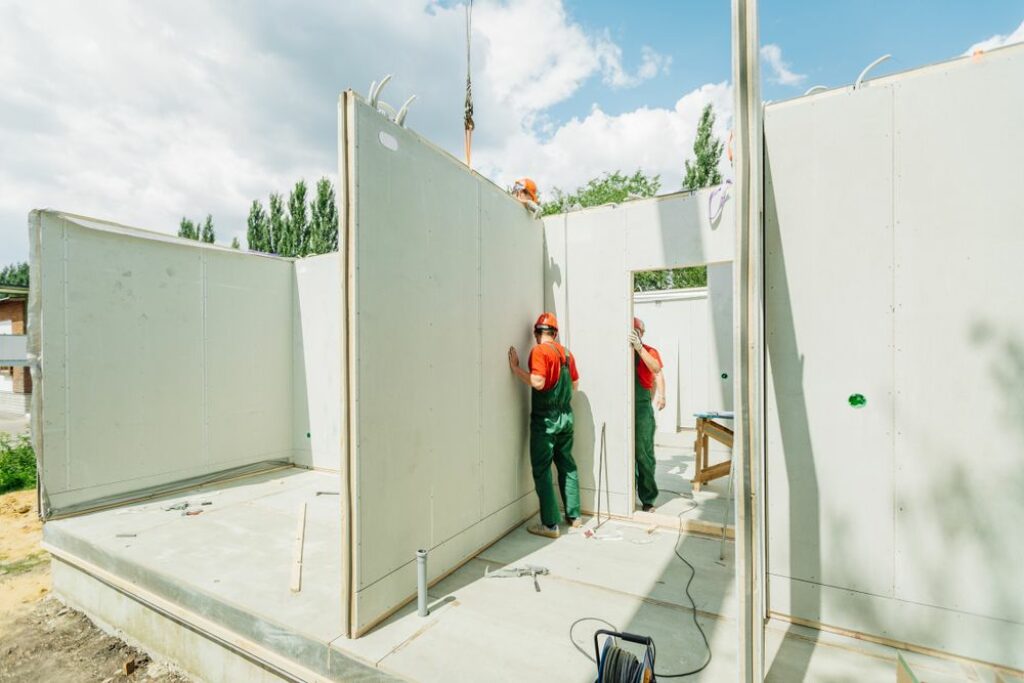
How Affordable are Prefabricated Homes in The US
The cost of buying a home has become very expensive in recent years and appears to continue to increase. The need for affordable housing has become very pressing in most areas of the US as a result. A possible solution to this problem is the advent of prefabricated homes.
Related Topics (Sponsored Ads):
Prefabricated homes, also known as prefab homes, are specialized dwelling types that are manufactured off-site in advance and then transported to the home site for assembly. These homes have gained popularity for their cost-effectiveness, sustainability, and efficient construction process. Prefab homes are built in a controlled factory setting, allowing for precision and quality control. They come in various styles and designs, ranging from simple bungalows to imposing Colonials. In the past, famous architects like Frank Lloyd Wright also experimented with prefab homes, incorporating unique design features.
With their customizable floor plans and stylish designs, prefab homes offer an attractive alternative to traditional stick-built homes. These homes offer several advantages, including faster construction time and potentially lower costs. They also allow for personalization and flexibility in terms of layout and design. This article will explore the pricing factors and considerations of prefabricated homes in the US.

Understanding the Price Factors of Prefabricated Homes
The cost of a prefab home is influenced by several factors. The size of the home is a major determinant, with larger homes naturally costing more than smaller ones. The level of complexity in design and the chosen finishes also impact the price. Customization options, such as additional rooms or unique architectural elements, can increase the cost. The type of prefab home chosen (manufactured, modular, or mobile) also affects the price. Additionally, the location of the home site and the transportation costs involved in delivering the modules play a role in determining the final cost.
Price Range and Examples
The price range for prefab homes can vary significantly depending on the factors mentioned above. As a rough estimate, a basic manufactured prefab home can start at around $50,000, while a more complex and larger modular home can range from $100,000 to $300,000 or more. Customized and high-end prefab homes can exceed $500,000. It’s important to note that these prices are approximate and can vary based on the specific requirements and customization options chosen by the homeowner.
Prices can vary greatly depending on the size, design, and location. As an example, Next Modular offers customizable floor plans for prefab homes at affordable prices. Their homes range from around $100,000 for a smaller, basic model to over $300,000 for a larger, more luxurious model. Other manufacturers may offer different price ranges, so it is important to research and compare options to find the best fit for your budget and needs.
Types of Prefabricated Homes
There are three main types of prefab homes: manufactured, modular, and mobile homes. Manufactured homes are built entirely in the factory and transported to the home site, where they are placed on a permanent foundation. Modular homes consist of multiple modules that are built in the factory and assembled on-site to create a complete home. Mobile homes, also known as trailers or manufactured homes, are designed to be movable and are often placed in mobile home parks. Each type has its own advantages and price considerations, with modular homes generally being more expensive than manufactured homes due to their higher quality and customization options. Therefore, it is important to understand the differences and choose the one that suits your preferences and budget.
Financing Options
Financing a prefab home is similar to financing a traditional stick-built home. Homebuyers can choose from various options such as mortgage loans, construction loans, and personal loans. Many lenders offer mortgage loans specifically for prefabricated homes, allowing buyers to secure financing for their dream home. Some prefab home manufacturers offer in-house financing options or lease-to-own options, providing additional flexibility for buyers. It’s important to explore different lenders and compare interest rates and terms to find the most suitable financing option. Additionally, some financial institutions offer green building or energy-efficient mortgages that provide incentives for eco-friendly prefab homes.
Popular Locations
These types of homes are becoming increasingly popular across the US, with various locations embracing this housing trend. One popular location is California, where the demand for affordable housing has driven the growth of the prefabricated home market. Other states such as Texas, Florida, and North Carolina, Oregon, Washington, and Colorado also have a significant number of prefabricated home communities. These locations offer a combination of affordability, desirable amenities, and attractive landscapes, making them ideal for those looking to invest in a prefabricated home.
Conclusion - Making an Informed Decision
Prefabricated homes offer a cost-effective and sustainable way to build your dream home. Understanding the pricing factors, such as size, complexity, and finishes, is crucial in making an informed decision. Exploring the different types of prefab homes, from manufactured to modular, allows you to choose the option that best suits your needs and budget. Financing options are widely available, making prefab homes accessible to a wide range of homebuyers. Popular locations for prefab homes span across the country, with various states embracing this modern housing trend. With careful consideration and research, you can find the best prefab home that meets your requirements and vision.




